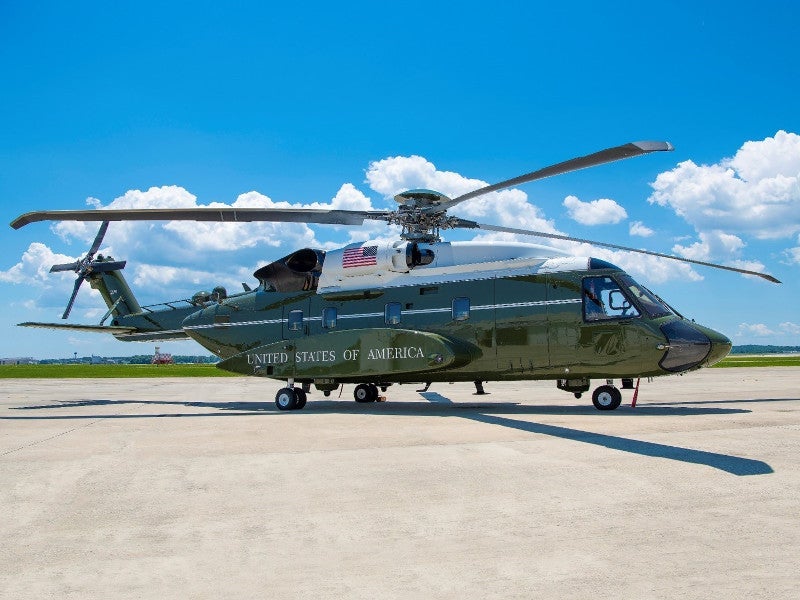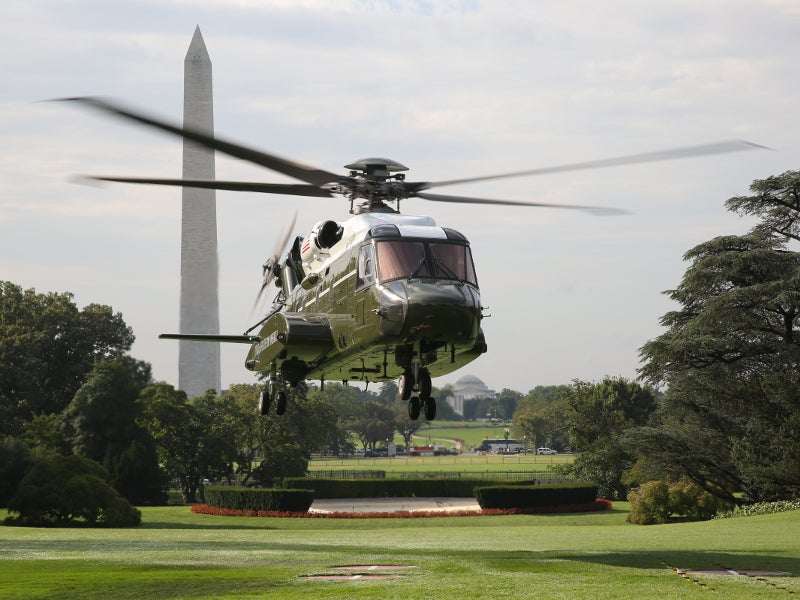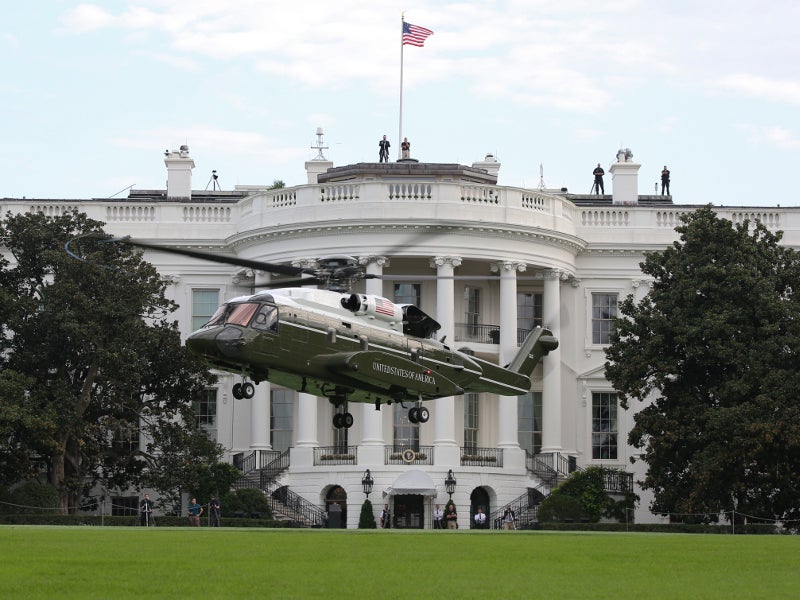The new Marine One, also referred to as VH-92A, is the next-generation presidential transport helicopter being developed for the US Marine Corps (USMC). It will replace the ageing VH-3D presidential helicopter in service with the USMC.
Sikorsky Aircraft, a Lockheed Martin company, is responsible for the production of the VH-92A helicopter.
Scheduled to enter service in 2021, the VH-92A helicopter will provide safe and reliable helicopter transportation for the US president and vice president.
VH-92A Marine One orders and deliveries
The US Navy placed a $1.24bn engineering and manufacturing development (EMD) contract with Sikorsky in May 2014. The fixed-price incentive contract includes production options for 21 operational and two test aircraft.
Deliveries of the six production helicopters, under the first low rate initial production (LRIP) contract, are scheduled to begin in 2021.
Sikorsky was awarded the second LRIP contract by the US Navy to build six production VH-92A helicopters in February 2020. The helicopters form part of the 23 aircraft programme of record for the USMC. Deliveries are scheduled to start in 2022.
VH-92A Marine One development
The US Air Force approved the VH-92A designation in October 2014. The preliminary evaluation of the mission systems on board the engineering development model commenced in December 2014. The test flight on the modified model was conducted in May 2015.
The preliminary design review (PDR) was completed in August 2015, while the critical design review (CDR) was concluded in July 2016.
The VH-92A made its first flight at Sikorsky’s facilities in Stratford in July 2017, while the USMC Marine Helicopter Squadron (HMX) 1 performed the first take-off and landing test at the White House in September 2018.
VH-92A design and features
Designed under the VH-92A Presidential Helicopter Replacement Program, the VH-92A is based on the FAA-certified S-92 helicopter integrated with an advanced mission communication system and executive interior.
The helicopter features a crashworthy fuselage, integrating twin turbo-shaft power-plant and a fully-articulated composite main rotor. The retractable try-cycle landing gear includes three twin-wheel units.
The self-contained fuel system of the helicopter meets the highest crashworthiness standards to reduce the risk of a post-crash fire. Energy-absorbing seats and landing gear are designed to reduce the effects of a hard landing.
The VH-92A helicopter also comes with a range of safety features such as flaw tolerance, de-icing system, lightning protection, protection against electromagnetic interference, and bird-strike protection.
The new Marine One helicopter is also equipped with defensive aids such as laser-based directional infrared countermeasures (DIRCM) and decoy launchers.
VH-92A cockpit and cabin
The unique cockpit layout ensures a superior field of view for safe operations. It is equipped with fully redundant flight-critical systems, avoiding single-point failures. The cockpit is manned by two crew members, a pilot and a co-pilot.
The base avionics package includes Collins Aerospace Proline communication and navigation radios, four multi-functional display units, and two display control panels. It also integrates an enhanced ground proximity warning system (EGPWS), traffic collision avoidance system (TCAS), weather radar, and health and usage monitoring system (HUMS).
The helicopter is equipped with the ARC-244A digital FM radio controlled by a remote terminal on a MIL-STD 1553 avionics data bus.
The VH-92A also integrates a full-duplex satellite communications capability with two Collins Aerospace ARC-210 radios. The integrated Wi-Fi system on board the rotorcraft uses a Wi-Fi router and a server with Ethernet capability.
Designed to accommodate 19 passengers, the 1.83m-high cabin offers true stand-up headroom. The 1.2m-wide cabin also offers more comfort when seated. The lower acoustic levels in the cabin allow the occupants to speak in a normal tone of voice.
Marine One engine and performance
Two General Electric CT7-8A turboshaft engines power the VH-92A helicopter. The power-plant is equipped with an integral particle separator and a pneumatic starting system.
The Honeywell 36-150 auxiliary power unit on the helicopter supplies emergency power to the onboard systems.
Marine One is primarily transported by C-17 Globemaster or C-5 Galaxy military transport aircraft.









